Forget Tuscany, Here Are The 5 Best Wine Regions In Portugal
It’s the middle of the afternoon on a Tuesday, and Dale Ott is laughing into half a glass of red wine, posing as she gazes out across the vineyards of Quinta da Confeiteira in Central Alentejo, one of Portugal’s largest—and still underrated—winemaking regions. As a co-founder of Nossa Imports, a national import company that she owns with her husband, Stephen, this moment is technically work, as the couple are bulking up on photography that captures the essence of their Portuguese portfolio.
In this day and age, visual storytelling is important for any hospitality client, but here, there’s a lot to take in: The sometimes dizzying greenery of the vines, the humble backdrop of massive clay talhas, or Roman fermenting vessels, tucked away in the garage, thick slices of sheep's milk cheese the winemaker brought out of the kitchen for pairing. For some, swirling a glass among the vines in Portugal may look like a moment from a dream vacation, but for the Otts, it’s just another day at work.
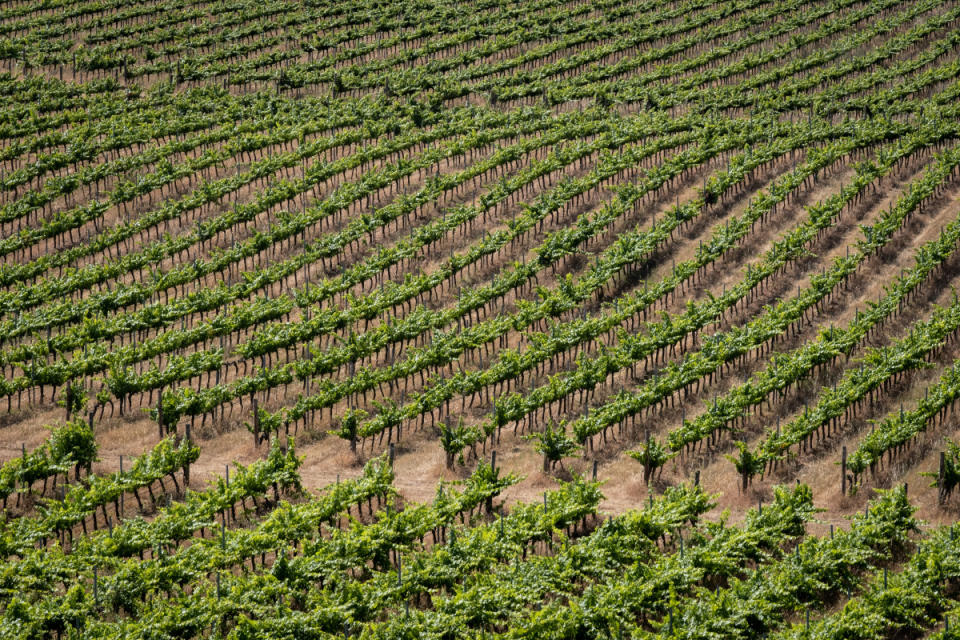
Courtesy of Nossa Imports
Stephen and Dale both took Portuguese language classes in college, long before they met, and after connecting through a bartending gig years later, they fell in love and began traveling the world together. Getting the chance to practice those linguistic skills by visiting Portugal on their honeymoon, their connection to the country quickly went deeper than either could’ve imagined. Tasting wines on their first visit led to another trip, and another, and soon, the idea of starting a wine importing business to highlight this country’s unsung varietals took root. That’s part of how Nossa was born, and the Arizona-based company now brings wines from both Portugal and Mexico into the United States, with an emphasis on supporting small, local producers who are preserving native winemaking techniques.
In the years since, The Otts have become experts on all that Portugal has to offer, traveling well beyond Lisbon, Porto and the Douro Valley into wine regions that are still completely unknown—at least to American palates. Because they’re fluent in Portuguese, The Otts are able to connect with farmers, winemakers, and wine professionals in a way that other Americans can’t, and have slowly but surely built a business by remaining inquisitive and bringing the best of what they find back home.
“We found so much of what was missing from the global wine story in Portugal,” Dale says. “It ties a lot of the pieces of the global story together.” The other fascinating thing? Despite its tiny size, Portugal has a staggering number of microclimates. “It's a country that’s the size of New York, and a quarter of the size of California, and there are literally thousands of microclimates,” Dale explains. “It’s like if you took a paper bag, crumpled it up, and every single wrinkle in that bag was producing completely different regionalized wines. It’s a universe inside this country.”
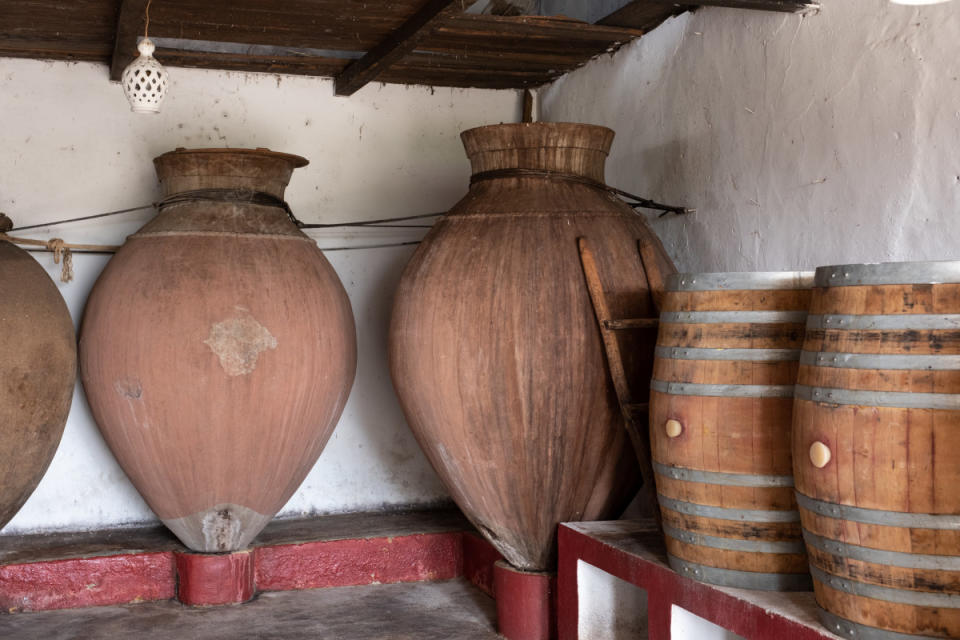
Courtesy of Nossa Imports
This leads to wildly different wines being made within a half hour drive of each other, and it also means exploring the already tangled world of Portuguese table wine is even more of a challenge. But it’s one that the Otts welcomed. “As wine professionals, and people who are passionate about wine, a lot of the joy comes not necessarily in only drinking wines from the same regions everyone is familiar with, but also discovering new people and new things,” Stephen says. “Wine is as diverse as people are diverse, and as diverse as the earth is diverse. We were patient about finding a region that had potential that wasn’t part of the conversation yet.”
On that note, here are some of the Portuguese regions where The Otts have found wines worthy of importing back to wine shops and restaurants in America for stateside drinkers to try. Whether you want to learn a little bit about the region, the winemaker who put it on the map, or just find the perfect bottle to add to your collection, these suggestions will keep Portuguese wine in the top of your mind—or help you plan your next trip.
Central Alentejo: The ancient Roman city of Évora
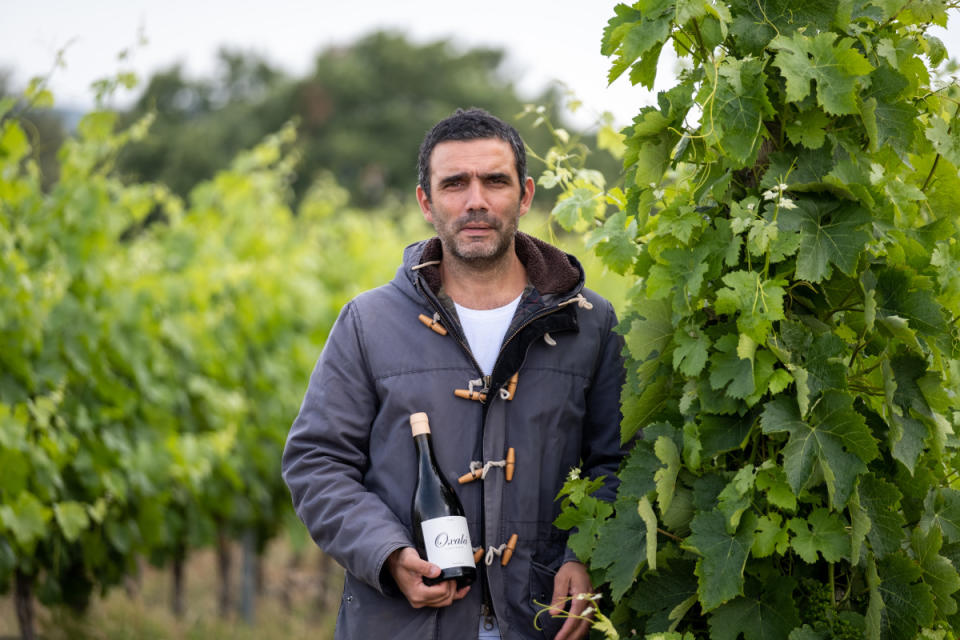
Courtesy of Nossa Imports
Recommended Bottle: Oxalá Calcário Reserva Branco (SRP: $28)
About an hour and a half drive from Lisbon, the historic city of Évora is a good landmark for central Alentejo, where Hugo Campos works tending vines and making wines for a few projects, including his Oxalá label. Alentejo is actually one of the largest wine regions in Portugal, and wines can vary substantially throughout the region based on the differing soil types. “Hugo makes wines with such intention,” Stephen says. “He’s vinifying based on soil type, so there’s a really delicate balance.” Campos uses an ancient “field blending” technique, combining up to four or five different grape varieties in his vintages. During fermentation, he places some of the blends in talhas, or Roman clay pots instead of barrels. “He’s this low intervention pied piper,” Dale says. “He uses minimal intervention and really embodies the traditions of the area. Plus, he’s a plant whisperer.” Their recommended bottle from Hugo is the Oxalá Calcário Reserva Branco, which has notes of limestone minerality and bright citrus acidity. “This wine gradually develops in the glass, giving way to orchard fruits, light salinity, and a creaminess that comes from Campos' expert use of barrel aging and contact with lees,” Dale says.
East Alentejo: The Spanish border town of Campo Maior
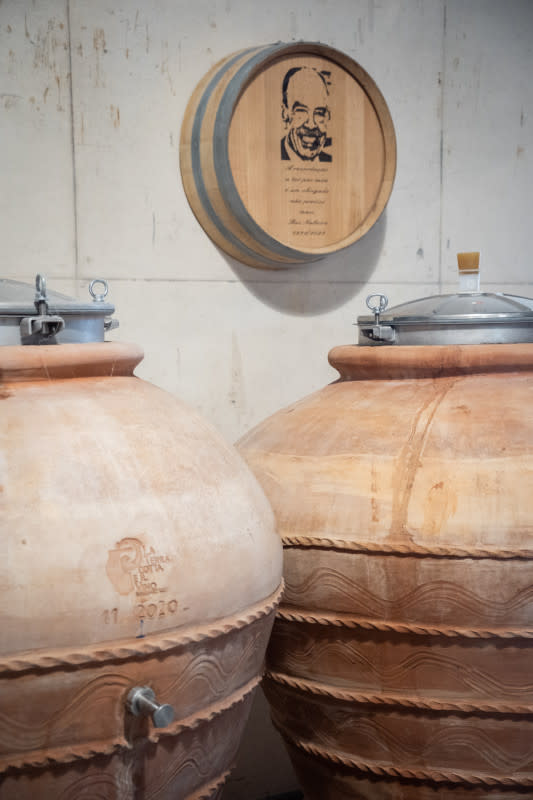
Courtesy of Nossa Imports
Recommended Bottle: Reserva do Comendador Tinto (SRP: $70)
So far east it’s practically in Spain, Campo Maior is a small border town that’s home to one of the larger wineries in the country, Adega Mayor. Though it’s about a three hour drive from Lisbon, this vineyard’s primary structure—which houses the winemaking facilities, storage, and tasting room—is a stunning feat designed by Portuguese architect Siza Vieira. Another reason to visit? Recently, the company made the shift to using 100% organic practices in farming their vineyard. “It’s really incredible for a company of this size to make the shift to using only organic processes in cultivating their vineyard,” Stephen says. “It’s just another way that winemaking in Portugal is ahead of the curve and right in step with the rest of the world.” From this winery they recommend a bottle of the Reserva do Comendador Tinto, a red that Dale says “demonstrates how profoundly the red-fleshed Alicante Bouschet grape has found a spiritual home in this region of the Alentejo.” “This bottle is a testament to “the vision of Rui Nabeiro, the winery's founder,” Stephen adds. “And proof of the capacity of the winery that he founded to make truly exceptional wines.”
Bairrada: Portugal’s sparkling wine epicenter
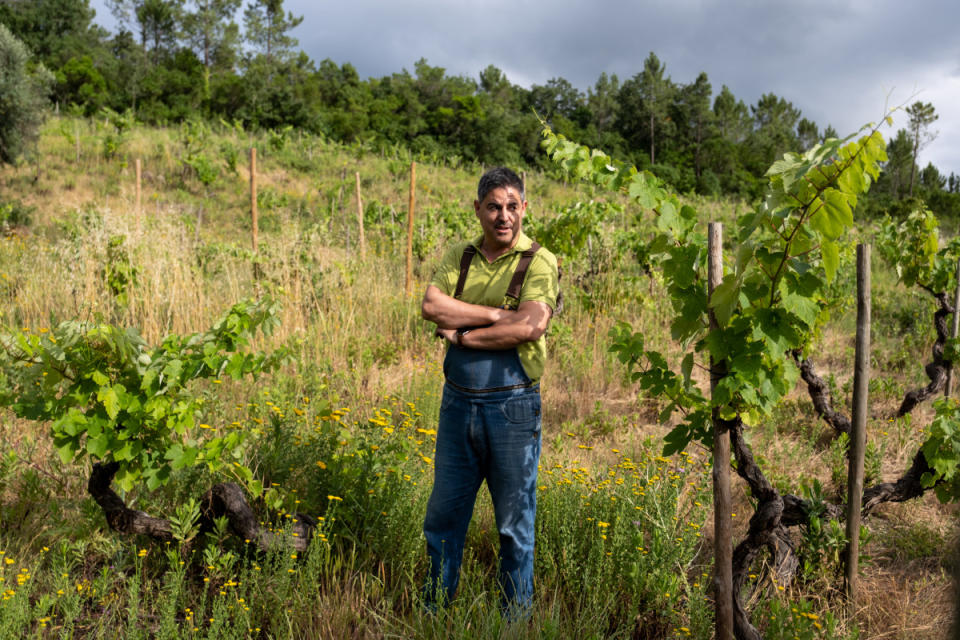
Courtesy of Nossa Imports
Recommended Bottle: Prior Lucas Rosé (100% Baga) (SRP: $30)
About two hours north of Lisbon, Bairrada is the perfect place for champagne obsessives to visit. It’s the beating heart of the country’s sparkling wine production (along with another region, Tavora-Varosa) and local son Rui Lucas has been doing his part to preserve not only his own family’s vineyards in Souselas, but also the lands of his aging neighbors in the surrounding area. Lucas farms this ancient terroir with the same no-till, low-intervention philosophy that’s been in place for centuries, safeguarding age-old vines that might otherwise be lost. The wines produced from these vines under his Prior Lucas label are, in a word, fantastic.
“In many ways he encapsulates the synthesis of Portugal’s profound winemaking tradition and this new generation that’s reviving ancestral vineyards,” Stephen says. “He’s an incredible steward of his land, and deeply invested in preserving the viticulture heritage of the place where he’s from.” Visiting the vineyards Lucas farms means stepping on wild fennel and dill, or the wildflowers that are mixed in with the vines, which are often old growth, haphazard arrangements, and not the militant straight lines that contemporary growers are accustomed to tending. Here, the Otts recommend the Prior Lucas Rosé, which Stephen calls “an exceptional expression of the potential that the indigenous grape Baga has for creating sparkling wines that are nuanced, complex, and as ageworthy as some of the finest champagnes.”
Alenquer: Lisbon wine region between the Montejunto Mountain Range and the Tejo River
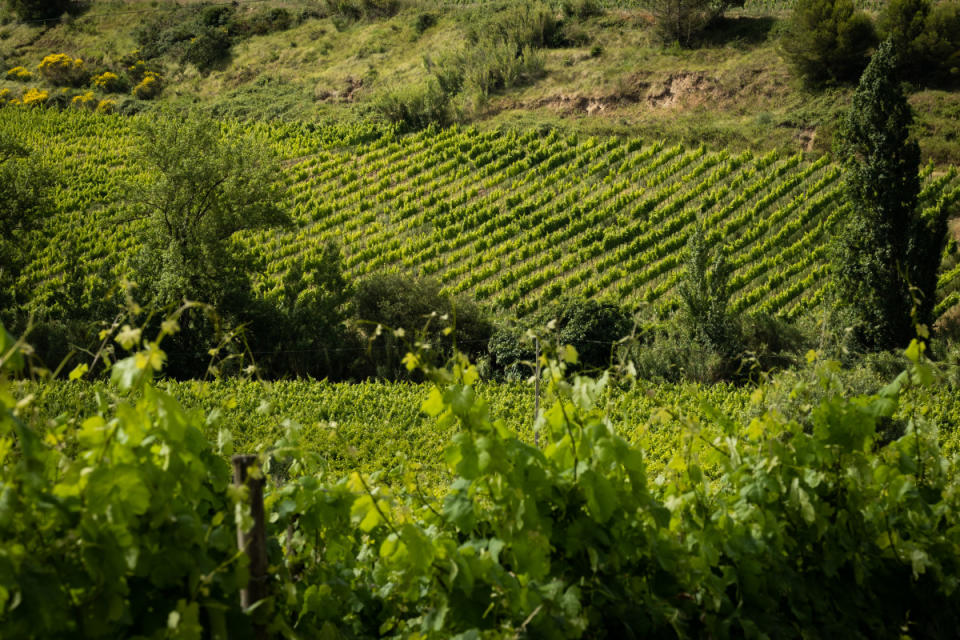
Courtesy of Nossa Imports
Recommended Bottle: Quinta do Pinto Grande Escolha (SRP: $60)
About 45 minutes north of Lisbon, the first thing that’s really compelling about Quinta do Pinto is that the entire production and vineyard management staff, from winemakers to fieldhands, is women. “It really enchants me that the vineyard management team and all of the harvest labor—all of it is women,” laughs Dale. “The winemaker always just says, ‘we’re better at details.’” One of the nine subregions in Lisbon, the Alenquer Valley is home to a lot of really old wine production, as in winemaking practices that date back to the middle ages. The Pinto family acquired the vineyard in the 1980s, so while it isn’t ancestral land, the current owners did purchase it with the intention of preserving the farm’s heritage.
“It’s called Quinta do Pinto because the ‘pinto’ was the denomination of currency in Portugal,” Stephen explains. “Historically, the grapes from their vineyard cost one pinto or more. So they were known for having high-quality, expensive grapes.” Quinta do Pinto are known for planting indigenous varietals as well as international varietals, which is rare in the area. A recommendation from this winery is the Quinta do Pinto Grande Escolha, a blend that Dale says “combines some of the most iconic Portuguese grapes with famous international varietals like Merlot and Petit Verdot. This wine showcases not only the beauty of Portugal's indigenous viticultural heritage but also the potential of the land to create entirely new expressions of familiar grapes from around the world.”
Península de Setúbal: Immediately south of Lisbon across the Tejo River
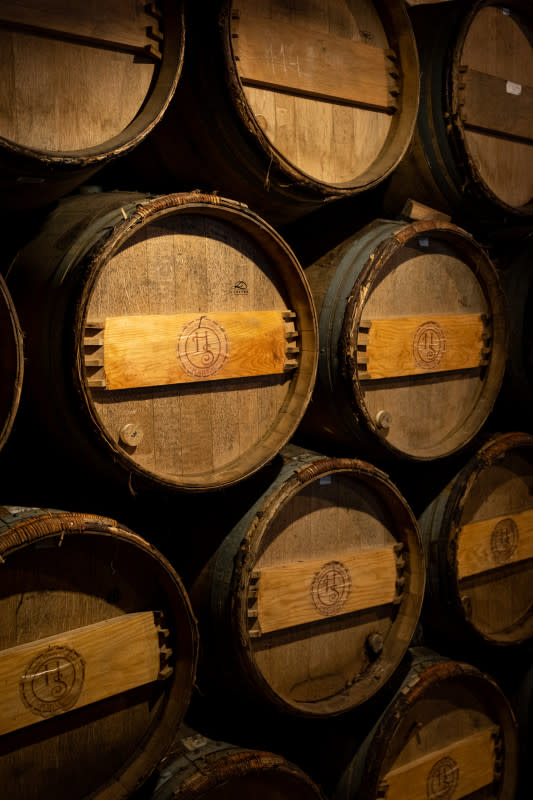
Courtesy of Nossa Imports
Recommended Bottle: Horácio Simões Moscatel de Setúbal (SRP: $20)
If you only have time to venture outside of Lisbon once during your visit, this is the region you should check out. Just a 20 to 30 minute drive south of the city, the Península de Setúbal is basically the delta of the Tejo River. “It’s extremely fertile, there’s a lot of vegetable production, and it’s where the oyster beds are,” Dale says. “At the same time it’s super sandy and at sea level, so these wines are sun-drenched, but the cold ocean air coming in at night brings in a diurnal shift that results in a striking amount of acid.” The region is known for making Moscatel, one of the four fortified wines made in Portugal—the others are the major exports, Port and Madeira, and then one is exclusively made in a very small area in the northern suburbs of Lisbon that’s called Carcavelo. “This wine is like orange blossoms and sunshine distilled into golden drops in a glass,” Dale says. “It’s so heavenly.” On that note, they’re recommending the Horácio Simões Moscatel de Setúbal, which Stephen says “offers sweetness on the palate that’s balanced against persistent acidity, complex florality, and undertones of walnuts and spices to complement the brightness of the flowers and citrus.”

